Subtotal: $
Checkout-

Defending Purity
-

Robert Frost’s “Birches”
-

Editors’ Picks Issue 16
-

Definition of a Good Farmer
-

The Naturalist’s Journal: Sightings
-

Gerrard Winstanley
-

Words that Got Martin Luther King Jr. Shot
-

Justice and the Old Testament Prophets
-

The Prophet We Need Now
-

Readers Respond: Issue 16
-

Family and Friends
-

Everyone Should Serve
-

A Child Named Problem
-

Were You There?
-

Dangerous Unselfishness
-

Redeeming the Soul of America
-

Powers and Principalities
-

The Casualties of War
-

For the Love of Neighbor
-

Two Friends, Two Prophets
-

Liberation at the Cross
-

Poem: Gaza Is Not Far Away

Born into an impoverished sharecropping family in Georgia, Benny Andrews learned to draw from his father, and then used art as a tool of survival. And not in any mystical sense: sharecropping work kept him out of school all but four or five months of the year, and he used his artistic skills to stay abreast of his studies. “I drew all the biology and plane geometry projects … and that, in a sense, got me through school,” he told an interviewer in 1975. It also earned him a place in the School of the Art Institute of Chicago, which he attended after serving in the Korean War. Far from his native home and culture – he was one of only nine black students – Andrews struggled to stay connected to his roots. At a time when the abstract expressionism of Rothko and others was in vogue, Andrews took a realist approach, carefully portraying the people and objects of his childhood and the city around him. At the time, this was “the most subversive thing there was.… It almost got to the point where you were considered to be abnormal, or something was wrong with you, or you had bad breath.”
His use of collage (particularly evident in War) was also subversive. Andrews often hung out around the institute janitors – “they were the kind of people I came from, they were like my relatives” – and wanted to paint something for them. He experimented by adding paper towels to his oil canvases to create his first collage, Janitors at Rest. “I didn’t want to lose my sense of rawness,” he said later. “Where I am from, the people are very austere. We have big hands. We have ruddy faces. We wear rough fabrics.… These are my textures.” In addition, the use of such unconventional materials kept him “unbalanced” as an artist. Keeping things difficult would help keep him humble and make him, in the end, the better artist.
In 1965 he began what he called his autobiographical series – memory paintings that dealt with the lives of people he knew during his childhood in Georgia. The Long Rows is an example of this, depicting his mother. Drawn from the viewpoint of a child, the painting transforms a bent woman into a heroic figure against the sky.
In the art world, an environment defined by prestige and money, Andrews never lost his pride in his origins and felt a responsibility to tell these stories even if it didn’t earn him a welcome in galleries. He realized that it was not just himself, a black man from rural Georgia, who was excluded; other artists – women, Native Americans, prisoners, Jews, and other minorities – were also largely ignored or made to feel ashamed of their experiences and backgrounds. To Andrews, these ingredients were the foundation of artistic expression. “The problem is that there’s more importance given to some people’s lives, where they came from, who they are, than other people’s.” In the face of this disparity, he warned young artists not to assimilate in order to succeed: “If you’re doing what you feel you want to do, and you’re trying to enlarge upon … your conscience and sticking with your decisions about what you’re trying to say, then that’s it. That’s success.”
As he gained recognition, Andrews worked to diversify the art world, taught art in prisons, and, at the end of his life, launched a foundation to support young minority artists. Despite all this activism, and despite his faithful depiction of the oppressed and marginalized in his paintings, he remained modest about what art can achieve. An artist, he claimed, is simply someone with a big enough ego “to believe that if you do an apple it will convey something that the millions of people who paint apples all the time do not.” But his own art – and humility – seem to belie this claim.
Attributions
Benny Andrews (1930–2006), War (Study #1), 1974, oil and graphite on canvas with painted fabric collage, 4" x 25" x 1 1/4" / 86.4 x 63.5 x 3.2 cm, signed. Private Collection; Courtesy of Michael Rosenfeld Gallery LLC, New York, NY. © Estate of Benny Andrews/Licensed by VAGA, New York, NY
Benny Andrews (1930–2006), The Long Rows, 1966, oil on canvas, 26" x 19" / 66.0 x 48.3 cm, signed. Collection of Smithsonian American Art Museum, Washington, DC; Courtesy of Michael Rosenfeld Gallery LLC, New York, NY © Estate of Benny Andrews/Licensed by VAGA, New York, NY
Benny Andrews (1930–2006), The Way to the Promised Land (Revival Series), 1994, oil on canvas with painted fabric collage, 72" x 50 3/4" x 1/4" / 182.9 x 128.9 x 0.6 cm, signed. Private Collection; Courtesy of Michael Rosenfeld Gallery LLC, New York, NY © Estate of Benny Andrews/Licensed by VAGA, New York, NY
Benny Andrews (1930–2006), Portrait of the Black Madonna, 1987, oil and collage on canvas, 36" x 48" / 91.4 x 121.9 cm, signed. Collection of Smithsonian American Art Museum, Gift of the Andrews Humphrey Family Foundation © Estate of Benny Andrews/Licensed by VAGA, New York, NY
Benny Andrews (1930–2006), Witness, 1968, oil on canvas with painted fabric collage, 48" x 48" x 1" / 121.9 x 121.9 x 2.5 cm, signed. Private Collection; Courtesy of Michael Rosenfeld Gallery LLC, New York, NY. © Estate of Benny Andrews/Licensed by VAGA, New York, NY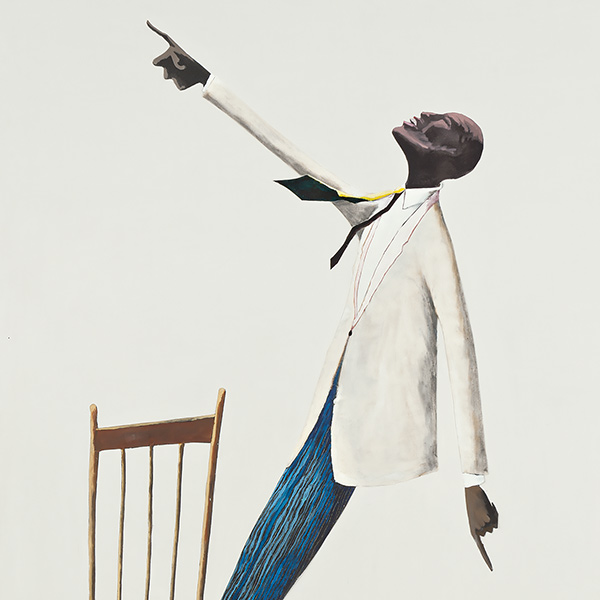
Already a subscriber? Sign in
Try 3 months of unlimited access. Start your FREE TRIAL today. Cancel anytime.





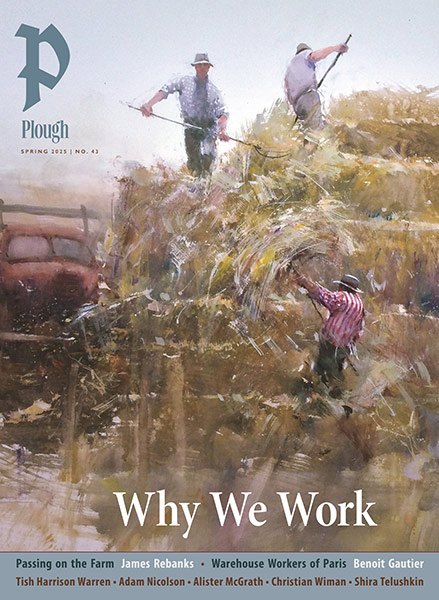


























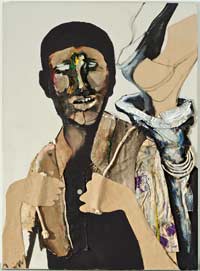
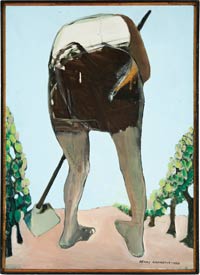
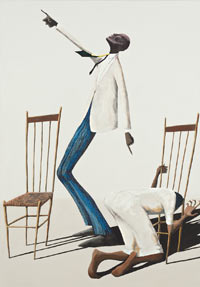

Marc Woernle
Thank you for posting this... Benny used the word “ego” when describing a belief that a painting of an apple will be different than all the other apples. Amazing how an example of ego can sometimes be another’s definition of “faith”. God allows both to operate in our lives, and sometimes it is only God that knows the difference...